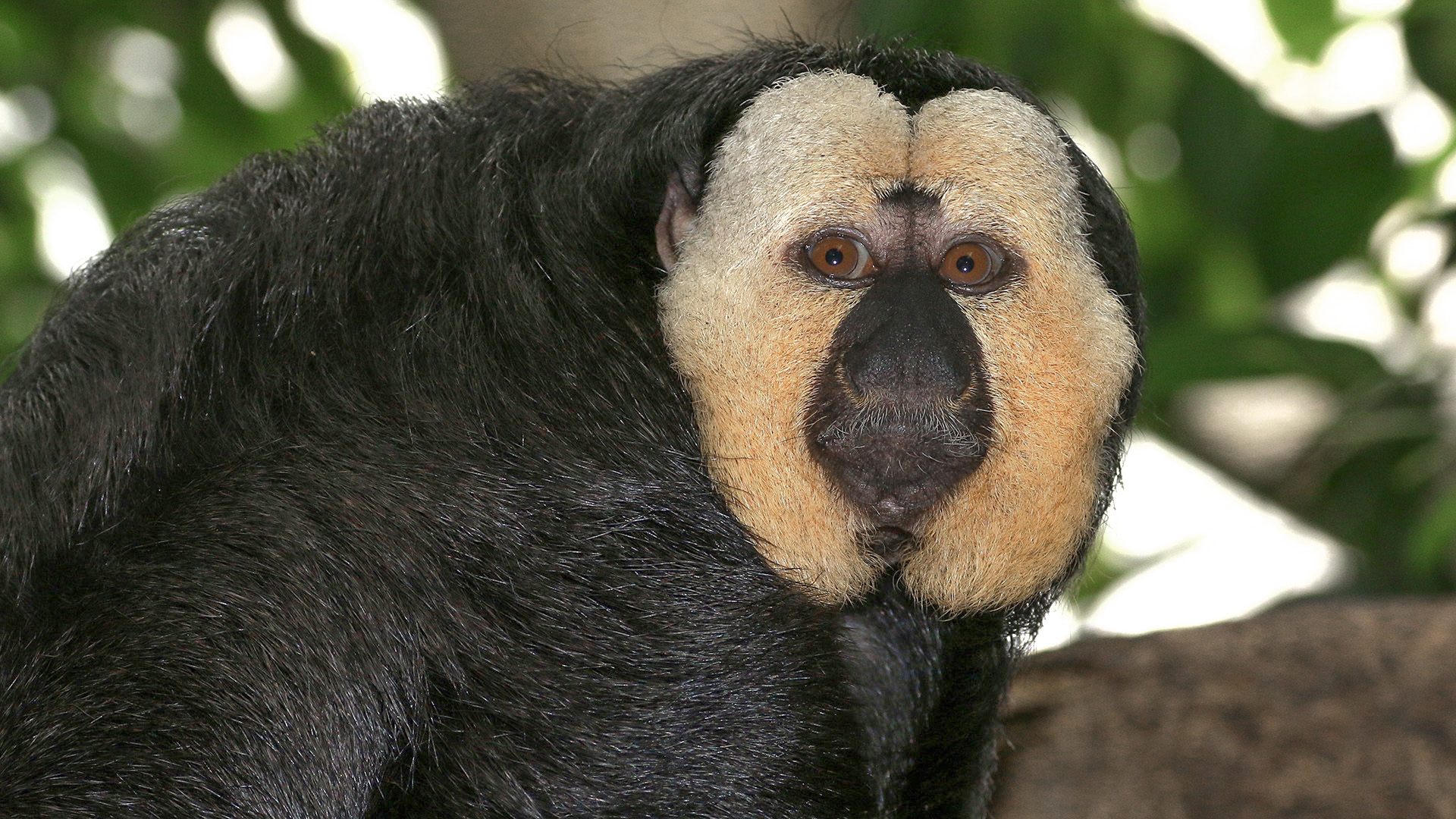
The big, white, and stunned face of a white-faced saki. /VCG Photo
The big, white, and stunned face of a white-faced saki. /VCG Photo
The white-faced saki (Pithecia pithecia) has a face that will keep you giggling for a while. The big white face with a rather dour expression makes this unique saki monkey stand out among other species within the genus Pithecia.
Mainly located in Brazilian rainforests and remote parts of Venezuela, the white-faced saki likes to inhabit areas with abundant fruit trees and watering holes.
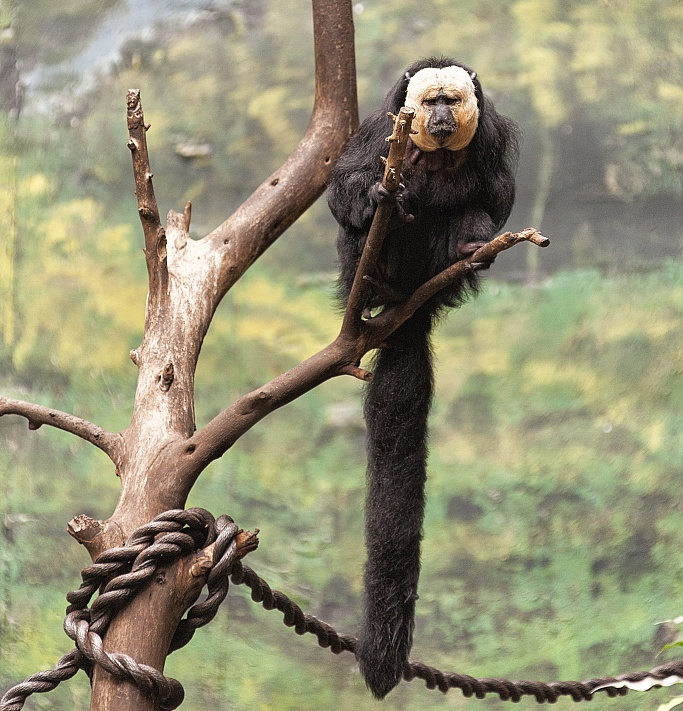
A white-faced saki sitting on a branch. /VCG Photo
A white-faced saki sitting on a branch. /VCG Photo
White-faced saki has a long and bushy tail, which helps in maintaining balance while jumping from tree to tree. Although it has a big face, its body is smaller with an average length of 32 to 40 centimeters, with a tail usually matching its body length. It usually weighs up to 2.4 kilograms.
Despite its name, only males have white faces. White-faced sakis display sexual dimorphism, which means the two sexes of the same species exhibit different characteristics beyond the differences in their sexual organs. Males and females are similar in size but males are slightly heavier. Female white-faced sakis have orange and brown colored fur around their chest and abdomen, while males have white faces and black fur.
Newborn sakis are very similar in appearance, the gradual color change usually occurs over a period of three-and-a-half to four years.
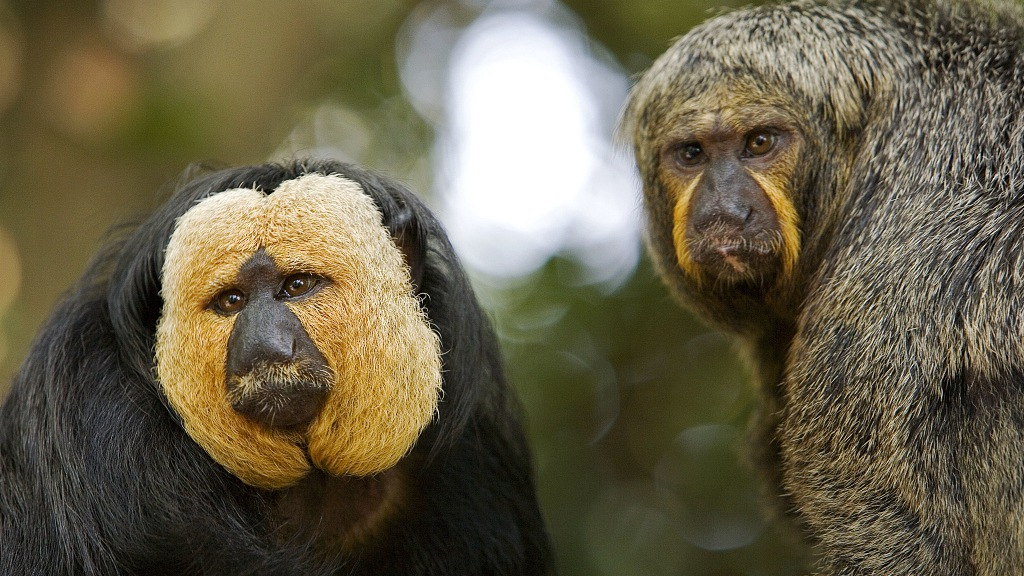
Sexual dimorphism is displayed between male and female white-faced sakis. /VCG Photo
Sexual dimorphism is displayed between male and female white-faced sakis. /VCG Photo
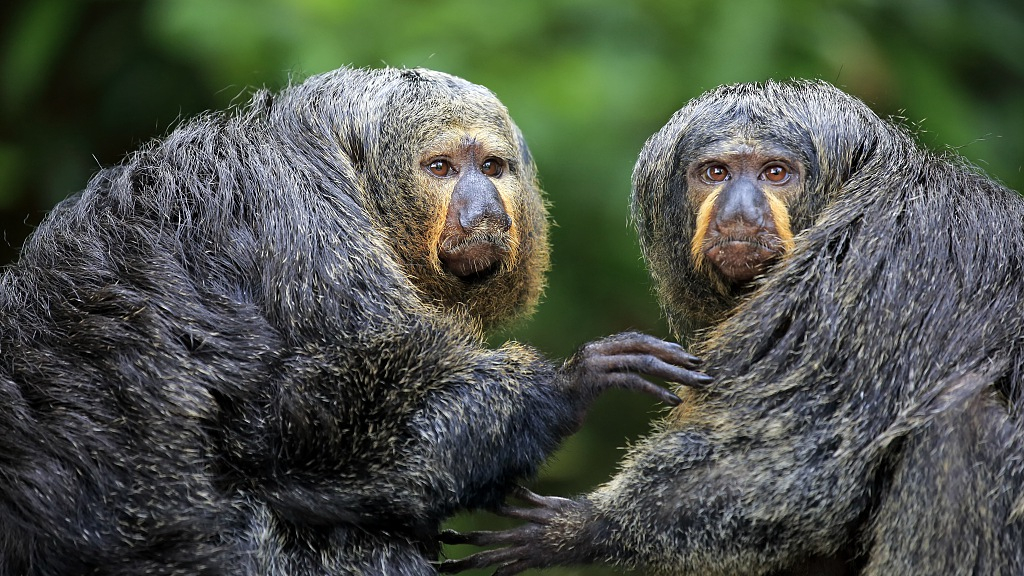
Two female white-faced sakis. /VCG Photo
Two female white-faced sakis. /VCG Photo
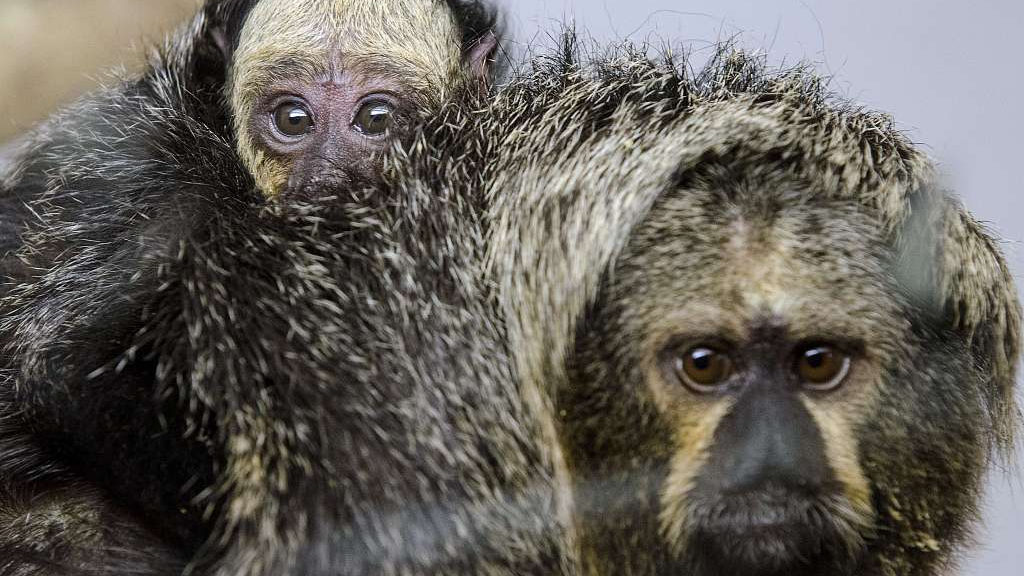
A female white-faced saki with her child. /VCG Photo
A female white-faced saki with her child. /VCG Photo
Like many monkeys, the male white-faced saki marks its territory with its scent. But unlike many others who mainly scent-mark with urine, it would rub its chest on tree trunks to make marks.
An interesting fact about sakis' diet is that they mainly eat seeds of fruits. They would spend up to 99 percent of their consumption time eating and breaking open the seeds. They also eat tender leaves, but only when fruits are not plentiful.
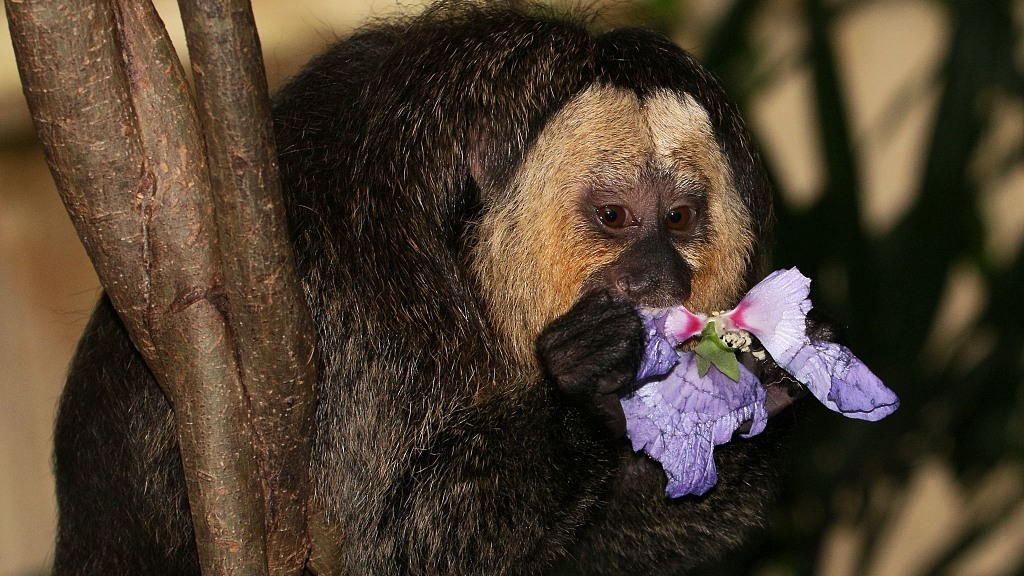
A white-faced saki is breaking down its food. /VCG Photo
A white-faced saki is breaking down its food. /VCG Photo
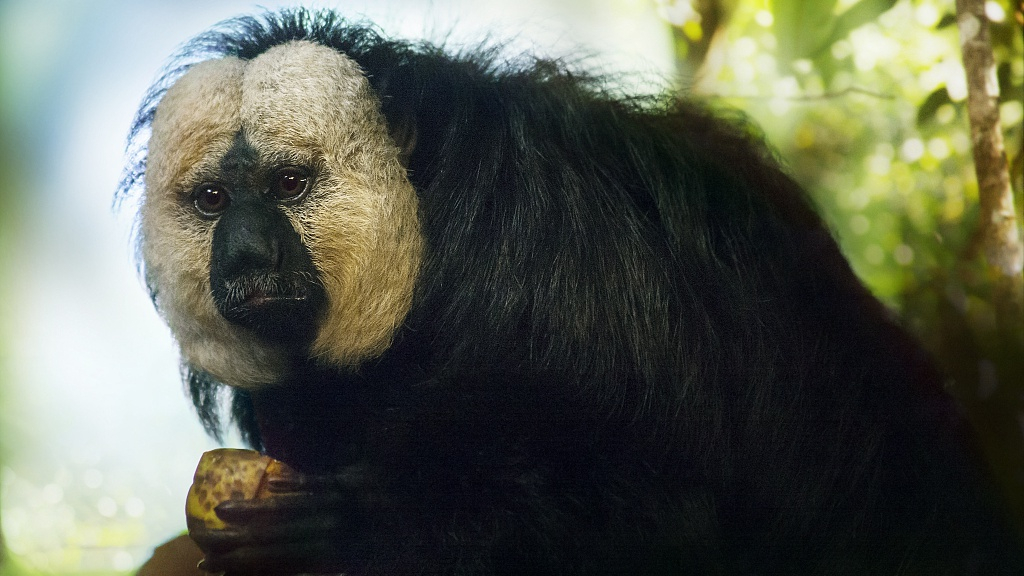
A white-faced saki is enjoying the seeds of a fruit. /VCG Photo
A white-faced saki is enjoying the seeds of a fruit. /VCG Photo
Small in size, the white-faced saki easily falls prey to large vultures and eagles. The good news is that with its excellent abilities in leaping, it can manage to escape from the avian predators. They are an active species, spending around 70 percent of their time jumping around trees and walking on trunks.
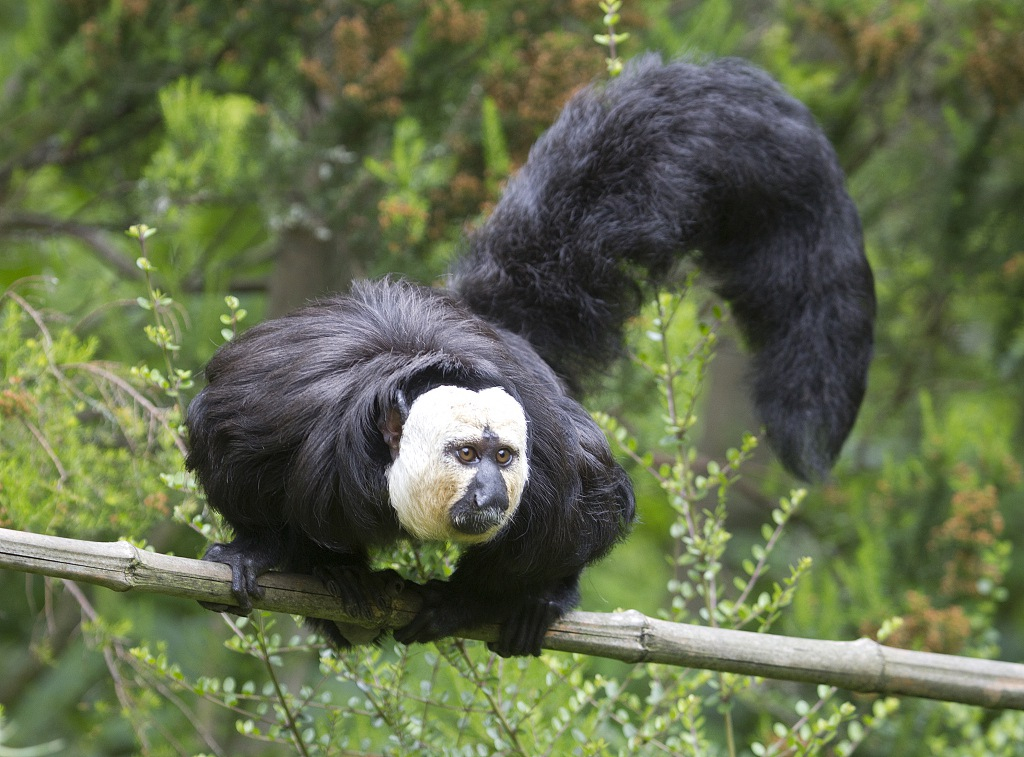
The big and bushy tail of a white-faced saki monkey helps it balance while jumping between branches. /VCG Photo
The big and bushy tail of a white-faced saki monkey helps it balance while jumping between branches. /VCG Photo
The white-faced saki is listed as "Least Concern" by the International Union for Conservation of Nature's Red List of Threatened Species. However, its population is on a decline due to its slow reproduction rate, and hunting by local people for food.
Read more about monkeys:
Monkey Mania Series
(Cover via VCG)
(If you want to contribute and have specific expertise, please contact us at nature@cgtn.com)